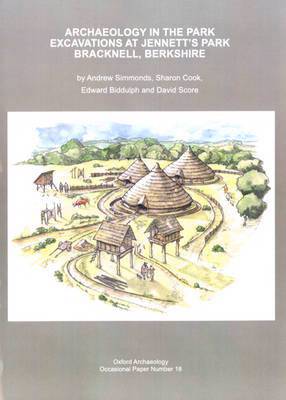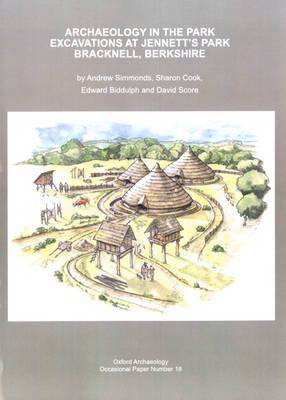
- Afhalen na 1 uur in een winkel met voorraad
- Gratis thuislevering in België vanaf € 30
- Ruim aanbod met 7 miljoen producten
- Afhalen na 1 uur in een winkel met voorraad
- Gratis thuislevering in België vanaf € 30
- Ruim aanbod met 7 miljoen producten
Zoeken
Archaeology in the Park
Excavations at Jennett's Park Bracknell, Berkshire
Edward Biddulph, Sharon Cook, David Score, Andrew Simmonds
€ 34,95
+ 69 punten
Omschrijving
Archaeological investigations at Jennett's Park, Bracknell, Berkshire, revealed episodes of occupation spanning several thousand years. The earliest activity was a small, temporary camp, which belonged to a band of Mesolithic hunter-gatherers. After a hiatus, activity recommenced in the middle Bronze Age. Features of this date comprised three burnt mounds, two waterholes, two trough-like pits and a possible cremation burial. Jennett's Park was first used for permanent settlement during the middle Iron Age, when a small farmstead was established. The settlement was occupied into the late Iron Age, but was abandoned and replaced by an agricultural landscape defined by a complex of field boundary ditches. The field system continued in use into the Roman period until the early 2nd century AD. Evidence was found at the northern end of the investigations for 11th/12th-century curvilinear stock enclosures, which were superseded by a system of fields and enclosures that were in use until the mid 14th century. Their abandonment in the 14th century was possibly associated with the creation of Easthampstead Park. A kiln, probably for limeburning, may have supplied lime for the construction of the first Easthampstead Park House in the 17th century.
Specificaties
Betrokkenen
- Auteur(s):
- Uitgeverij:
Inhoud
- Aantal bladzijden:
- 80
- Taal:
- Engels
- Reeks:
- Reeksnummer:
- nr. 18
Eigenschappen
- Productcode (EAN):
- 9780904220582
- Verschijningsdatum:
- 31/07/2010
- Uitvoering:
- Paperback
- Formaat:
- Trade paperback (VS)

Alleen bij Standaard Boekhandel
+ 69 punten op je klantenkaart van Standaard Boekhandel
Beoordelingen
We publiceren alleen reviews die voldoen aan de voorwaarden voor reviews. Bekijk onze voorwaarden voor reviews.








